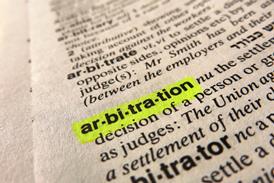As George Harrison once sang: ‘All things must pass.’ So while protesters, trespassers and others may now be quietly isolated (keyboard activism apart), normal life will eventually resume – and with it will come the need to restrain any unlawful or other anti-social behaviour.

On 21 January 2020, the Court of Appeal in Bromley LBC v Persons Unknown and others [2020] EWCA Civ 12 had dismissed the council’s appeal against the High Court’s refusal to grant a borough-wide injunction against encampment and occupation by ‘persons unknown’ (in effect, the Gypsy and Traveller community).
The court (at paragraphs 99-109) had issued ‘wider guidance’, including the advisability of defining a time limit with a review. It also highlighted the need for proper engagement with the Gypsy and Traveller community, as well as an assessment of the impact an injunction might have, in the light of their specific needs, vulnerabilities and different lifestyle.
This was followed on 5 March 2020 by the judgment of the Court of Appeal in Canada Goose UK Retail Ltd and another v Persons unknown (1) and People for the Ethical Treatment of Animals Foundation (PETA) (2) [2020] EWCA Civ 303 (Sir Terence Etherton MR, Lord Justice David Richards and Lord Justice Coulson).
The first defendants were described in the claim form as: ‘Persons unknown who are protestors against the manufacture and sale of clothing made of or containing animal products and against the sale of such clothing at Canada Goose, 244 Regent Street, London W1B 3BR.’
In dismissing the appellant’s appeal against the refusal of injunctive relief and the discharge of interim injunctions, the court gave ‘procedural guidelines’ for interim relief proceedings against ‘persons unknown’ in applicable protester cases. These were given, having regard to the principles outlined in Cameron v Liverpool Insurance Co Ltd [2019] UKSC 6 and Ineos Upstream Ltd v Persons Unknown [2019] EWCA Civ 515.
In Cameron (at paragraph 17), Lord Sumption outlined ‘a fundamental principle of justice’ in this context – ‘a person cannot be made subject to the jurisdiction of the court without having such notice of the proceedings as will enable him to be heard’. In Jacobson v Frachon (1927) 138 LT 386, Atkin LJ said that the principles of natural justice involve ‘that the court… has given notice to the litigant that they are about to proceed to determine the rights between him and the other litigant’ and ‘having given him that notice, it does afford him an opportunity of substantially presenting his case before the court’.
And Longmore LJ in Ineos (paragraph 34) had ‘tentatively’ framed requirements ‘necessary for the grant of the injunction against unknown persons, whether in the context of the common law or in the context of the ECHR’.
So in paragraph 82 of Canada Goose, ‘building on the Cameron and Ineos requirements’, the court set out its ‘procedural guidelines’. These are briefly noted as follows:
1. The ‘persons unknown’ defendants must be those who have not been identified but are capable of being identified and served with the proceedings, if necessary by alternative service such as can reasonably be expected to bring the proceedings to their attention.
2. The ‘persons unknown’ must be defined in the originating process by reference to their conduct alleged to be unlawful.
3. Interim injunctive relief may be granted only if there is a sufficiently real and imminent risk of a tort being committed to justify quia timet (‘because he fears’) relief. These are injunctions to restrain wrongful acts that are anticipated but have not yet occurred.
4. The defendants subject to the interim injunction must be individually named, if known and identified, or – if not and described as ‘persons unknown’ – must be capable of being identified and served with the order, if necessary by alternative service, the method of which must be set out in the order.
5. The prohibited acts must correspond to the threatened tort. They may include lawful conduct if and only to the extent that there is no other proportionate means of protecting the claimant’s rights.
6. The terms of the injunction must be sufficiently clear and precise to enable potentially affected people to know what they must not do.
7. The interim injunction should have clear geographical and temporal limits. It must be time-limited because it is an interim and not a final injunction.
In line with the ‘fundamental principle of justice’ mentioned in Cameron, the court also said a final injunction cannot be granted in a protester case against those ‘persons unknown’ who are not parties at the date of the final order – those who have not by that time committed the prohibited acts and therefore do not fall within the description of the ‘persons unknown’ and who have not been served with the claim form.
The court also considered the description in the claim form in Canada Goose to be impermissibly wide: ‘It would, as the judge pointedly observed, include a peaceful protester in Penzance.’ The injunctions also failed ‘to provide a method of alternative service that was likely to bring the attention of the order to the “persons unknown” as that was unlikely to be achieved’. And although Canada Goose sought to use private litigation, effectively to prevent what it saw as public disorder, ‘Private law remedies are not well suited to such a task’.
The above judgments (together with Cuadrilla Bowland Ltd v Persons Unknown [2020] EWCA Civ 9) will repay study by all practising in this area.

Nicholas Dobson writes on local authority law and governance





























No comments yet